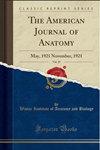Plasma membrane-associated vesicles in retinal capillaries of the rat.
引用次数: 16
Abstract
The structure and function of abluminal vesicles in endothelial cells of rat retinal capillaries was examined using glutaraldehyde-tannic acid fixation and the hemeproteins--horseradish peroxidase, microperoxidase, and lactoperoxidase--as tracers. Numerous vesicles, delimited by a tannic acid-positive membrane, were distributed along the abluminal front. Other vesicles were arranged in clusters and chains or tubule-like structures. Such vesicles were not found in the vicinity of the capillary lumen. When the retina was exposed to hemeproteins, either in vitro or after intravitreal injection, the abluminal vesicles became labeled with tracer reaction product. Apparently "free" vesicles and tubules seen in tangential sections through the basal lamina were also labeled, suggesting that they were in continuity with the plasma membrane in another plane of section. No enzyme reaction product was present in the capillary lumen. Peroxidase-positive multivesicular bodies were observed, suggesting that some protein was endocytosed and directed to lysosomes where it was presumably degraded. The results suggest that abluminal endothelial vesicles represent pits or invaginations of the plasma membrane and, as such, are not involved in the transendothelial transport of protein from the perivascular space to the capillary lumen. Tannic acid treatment revealed a population of similar vesicles associated with the plasma membrane of pericytes. After exposure to hemeproteins, enzyme reaction product was localized in these vesicles and in a few multivesicular bodies. The results suggest that the majority of these vesicles are in continuity with the plasma membrane and are not involved in endocytosis.大鼠视网膜毛细血管中的质膜相关囊泡。
采用戊二醛-单宁酸固定和血红蛋白(辣根过氧化物酶、微过氧化物酶和乳过氧化物酶)作为示踪剂,研究了大鼠视网膜毛细血管内皮细胞内腔囊泡的结构和功能。由单宁酸阳性膜划分的大量囊泡沿腔面分布。其他囊泡呈簇状、链状或小管状排列。在毛细血管管腔附近未见此类囊泡。当视网膜暴露于血红蛋白时,无论是体外注射还是玻璃体内注射,腹腔小泡都被示踪反应产物标记。基底膜切向切片上可见的“自由”囊泡和小管也被标记,表明它们在另一个切片平面上与质膜连续。毛细血管腔内未见酶反应产物。观察到过氧化物酶阳性的多泡体,表明一些蛋白质被内吞并定向到溶酶体,在那里它可能被降解。结果表明,腹腔内皮泡代表了质膜的凹坑或内陷,因此,不参与蛋白质从血管周围空间到毛细血管腔的跨内皮运输。单宁酸处理显示了一群与周细胞质膜相关的类似囊泡。暴露于血红蛋白后,酶反应产物局限于这些囊泡和少数多囊体。结果表明,这些囊泡大多数与质膜连续,不参与内吞作用。
本文章由计算机程序翻译,如有差异,请以英文原文为准。
求助全文
约1分钟内获得全文
求助全文

 求助内容:
求助内容: 应助结果提醒方式:
应助结果提醒方式:


